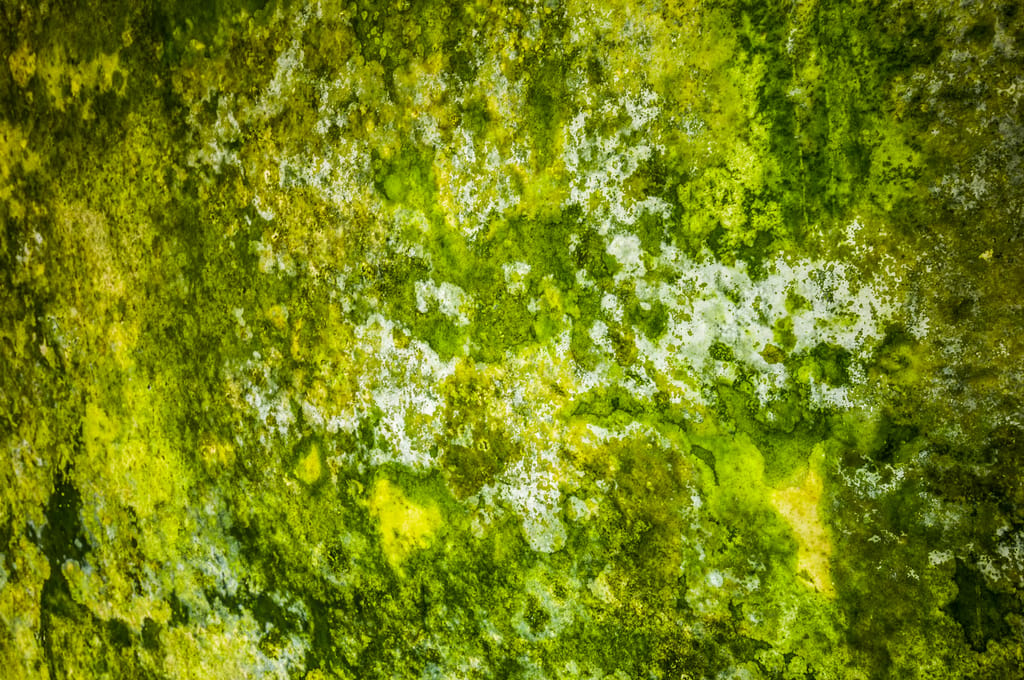What is mildew?
Mildew is a type of fungal growth that commonly appears as a white, gray, or black powdery substance on various surfaces including walls, fabrics, and furniture. It is a common household problem, but can also be found in buildings, on plants, and in soil. Mildew is caused by the growth of certain types of fungi, which thrive in warm, moist environments. Once it is present, it can spread rapidly, leading to unsightly and often smelly patches. In order to prevent the growth from forming and spreading, it is important to keep surfaces dry and to remove any moldy materials quickly.
Identify mildew
Mildew is a type of fungus that can be found in a variety of environments, and it is common to find it in homes. This fungus can cause a musty and unpleasant odor and can even lead to health problems, so it is important to identify it and take steps to remove it from your home. To identify mildew in your home, first look for visible signs, such as discoloration or staining on walls, floors, or ceilings.
The growth often appears as a grayish-white, powdery substance and can be found in areas of high humidity, such as bathrooms, kitchens, and basements. It can also be found in places where there is little ventilation, such as closets, attics, and window frames. You can also look for signs of mildew by checking for a musty smell. This odor is often described as being similar to damp soil or rotting wood and is usually strongest in areas where there is high humidity.
If you suspect that you have mildew in your home, it is important to take action to remove it. Begin by cleaning the affected areas with a mildew-killing detergent and water, and then follow up with a mildew-resistant paint or sealant. It is also important to ensure that the area is well ventilated and to keep it dry to prevent the mildew from returning. By following these steps, you can help to identify and remove mildew from your home and ensure that your family is safe and healthy.

Dangers of Mildew
Mildew infestation can present a serious threat to the health of individuals and property. It is important to be aware of the potential dangers of the fungus growth in order to identify and address an infestation before it becomes a major problem. The growth is a type of fungus that thrives in damp, humid environments and can be found both indoors and outdoors. It is typically characterized by a white, powdery appearance and a musty smell. When left unchecked, it can spread quickly and cause serious damage to structures and furnishings.
In addition to property damage, such infestations can also have a negative impact on individuals’ health. The spores from mildew can cause allergies and asthma attacks, as well as respiratory infections and other illnesses. People with compromised immune systems, such as those suffering from HIV/AIDS or undergoing chemotherapy, are particularly vulnerable to the effects of this threat. In order to prevent infestations, it is important to maintain good ventilation in your home or office, as well as clean and dry areas that are prone to moisture buildup.
If an infestation is suspected, it is best to contact a professional for assistance in identifying and addressing the problem. By being aware of the dangers of mildew infestation and taking steps to prevent it, individuals and property owners can protect their health and the integrity of their home or office.
Tips for Preventing and Treating Mildew
Ventilate Your Home: This is key to preventing and treating mildew. Make sure to open windows and use fans to circulate the air in your home. This will help reduce the humidity and moisture that encourages undesirable growth.
Clean Regularly: Cleaning your home and keep it free of dust and other debris. Also, it is important to clean behind furniture and appliances to prevent an infestation from taking hold.
Use Dehumidifiers: These appliances can help reduce the moisture in your home. This can be especially helpful in areas that are prone to mildew, such as bathrooms and basements.
Repair Leaks: Problems with your plumbing or roof should be fixed right away. This will help prevent excess moisture from building up, which can lead to mildew growth.
Use Mildew-Resistant Paint: When painting your home, use a mildew-resistant paint. This can help prevent the problem from taking hold.
Use Bleach: It can be used to disinfect surfaces and kill mildew. Be sure to use a diluted solution and always wear protective gear when using bleach.
Use Vinegar: Vinegar can be used as a natural mildew remover. Simply mix equal parts of white vinegar and water in a spray bottle and spray on affected areas.
Use Baking Soda: The compound can be used as a mildew remover. Simply mix a few tablespoons of baking soda in a cup of water and apply to the affected area.
Replace Damaged Items: Items such as carpets and furniture that are damaged by mildew should be replaced as soon as possible. This will help keep the fungus from spreading to other parts of your home.
Use Natural Insect Repellents: Lavender oil and citronella can help prevent mildew from taking hold. Simply spray the affected area with a mixture of the insect repellent and water.
Conclusion
Mildew is a type of fungus that thrives in moist environments, and can cause discoloration, staining, and even odors. It is important to take preventative measures to keep mildew from forming, as it can be difficult to remove once it has set in.
Reference
- Family Handyman. (2023, February 15). How to Get Rid of Mildew and Mold. https://www.familyhandyman.com/project/how-to-combat-mold-and-mildew/
- What is the difference between Mold and Mildew? (2022, October 26). US EPA. https://www.epa.gov/mold/what-difference-between-mold-and-mildew
- Wikipedia contributors. (2023, January 17). Mildew. Wikipedia. https://en.wikipedia.org/wiki/Mildew